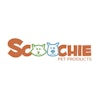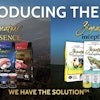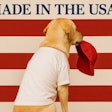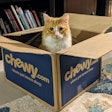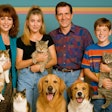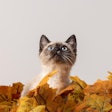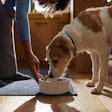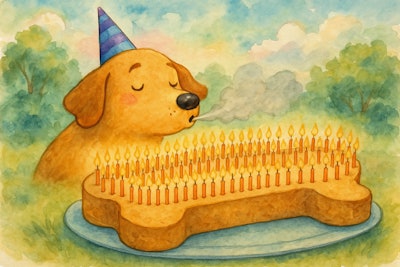
Personal spending on pets, pet products and related services in the United States has grown consistently for nearly a century, showing resilience through periods of economic downturn, like the Great Recession and pandemic. According to U.S. Bureau of Economic Analysis data published by the Federal Reserve Bank of St. Louis, inflation-adjusted personal consumption expenditures in this category have expanded from near zero in the early 1930s to more than US$180 billion by 2023.
Pet food spending growth in the 20th century
 U.S. Bureau of Economic Analysis data published by the Federal Reserve Bank of St. Louis
U.S. Bureau of Economic Analysis data published by the Federal Reserve Bank of St. Louis
Throughout the 20th century, pet-related expenditures increased modestly, particularly from the 1960s through the 1980s. This gradual rise paralleled gains in household disposable income, suburbanization and a cultural shift toward viewing pets as family members. The pace of growth accelerated in the 1990s and early 2000s, likely supported by economic expansion and increased dual-income households, which provided more discretionary spending capacity.
Economic challenges and rapid growth in the 2000s
The 2001 and 2008 recessions caused some deceleration in spending growth but did not result in contractions. After the 2008 financial crisis, spending on pets continued to grow, reflecting the sector's defensive nature. Industry analysts often attribute this resilience to the emotional bond between owners and pets, which tends to translate into non-discretionary spending habits.
Post-2010, spending sharply accelerated. From 2010 to 2023, personal consumption expenditures in the pet category more than doubled. This period coincided with both rising household wealth and increased pet ownership rates. The COVID-19 pandemic further fueled this growth, as millions of Americans adopted pets and invested in their care during lockdowns.
Disposable income correlated to pet food spending
The correlation between disposable income and pet expenditures indicates that as U.S. households gained economic ground, their spending on pet food, veterinary services, grooming and other pet products followed suit. While economic uncertainty can impact some discretionary categories, pet-related spending has shown itself to be more stable, making the sector a reliable growth area within consumer goods.
The Fed’s Real Disposable Personal Income: Per Capita (in chained 2017 dollars) data reflects the income households have available after taxes, adjusted for inflation. In 1939, real disposable income per capita was about US$7,946. By contrast, by August 2025 that measure had reached roughly US$52,830. This represents a more than six‑fold increase in real disposable income per person over roughly 85 years.
That long‑term rise in disposable income helps explain why spending on pets, pet food and related services has steadily climbed. The increase in per‑person disposable income, rather than simply pet food price inflation or pet population growth, points to real growth in consumers’ discretionary budgets for pet food and similar products.

